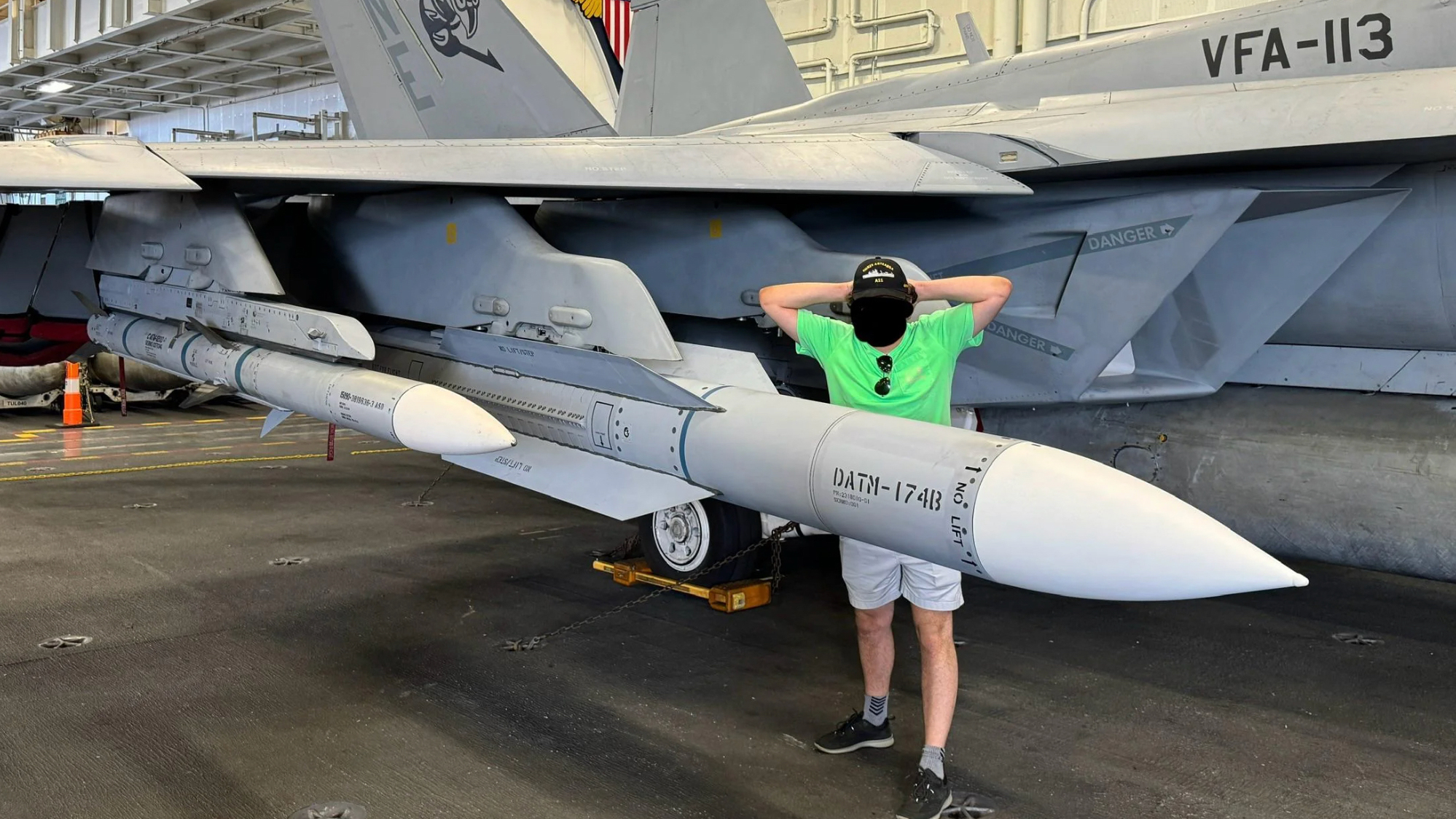The air-launched SM-6, designated AIM-174B, is significantly larger than the AIM-120 AMRAAM missile.
As reported in detail recently, F/A-18E/F Super Hornets deployed with CVW-2 aboard USS Carl Vinson aircraft carrier were photographed at Joint Base Pearl Harbor-Hickam, Hawaii, taking part in Rim of The Pacific 2024 (RIMPAC 2024), carrying the new AIM-174B, the air-launched variant of the Standard Missile 6 (SM-6).
The SM-6 is the surface-to-air missile designed to be used on Navy ships in conjunction with the Aegis Combat System and also known as the RIM-174 Standard Extended Range Active Missile (ERAM); the AIM-174B is the SM-6 variant developed for the air-to-air role.
The photos in this post were taken by Reddit user Offsetski on Jul. 6, 2024, aboard the USS Carl Vinson (CVN-70) aircraft carrier while moored in Pearl Harbor for RIMPAC 2024. They show an F/A-18E from VFA-113 with an AIM-174B and an AIM-120D under the right wing.
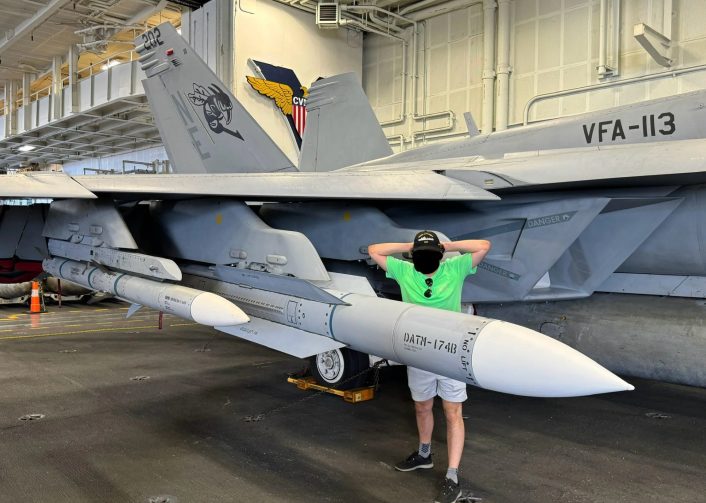
The larger missile, labeled “DATM-174B,” is a “dummy” AIM-174B missile, without motor or warhead, which can be used for ground handling and loading training. Regarding its size, the standard SM-6 missile is about 21 feet (6.4 meters) long. Judging by the person standing near the missile for scale, the AIM-174B in the photo seems to be of similar length.
The photos also offer a visual size comparison between the AIM-174B and the AIM-120D.
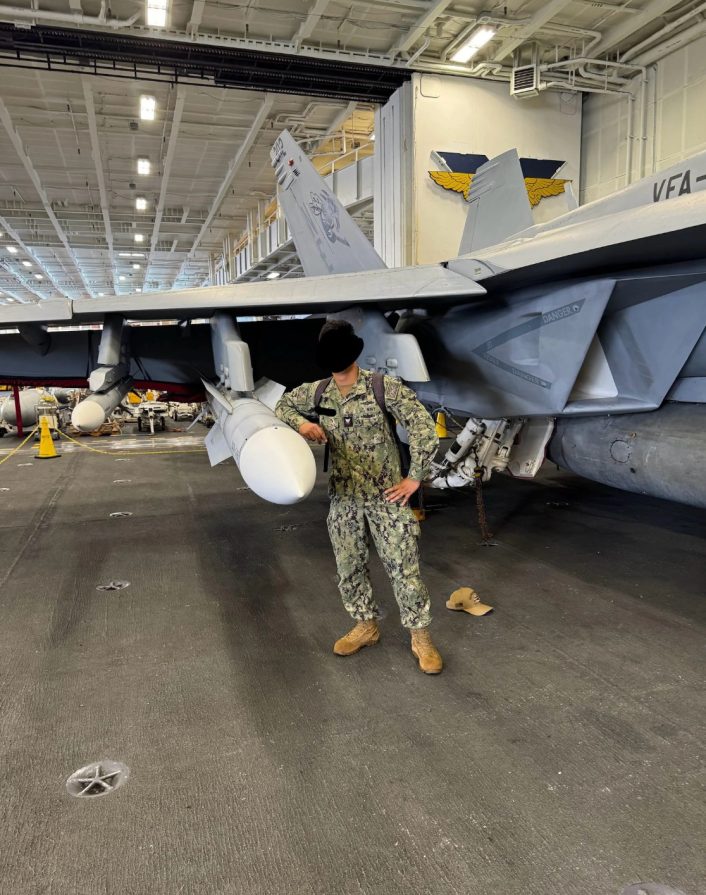
According to the stencils visible on the photos of the missile carried by the CVW-2 Super Hornets taking part in RIMPAC, the AIM-174B (designated NAIM-174B, with the N prefix indicating modifications for special tests where reconversion to the original configuration is neither planned nor feasible at reasonable costs) weighs 1,890 lb ± 14 lb (857 kg ± 6 kg).
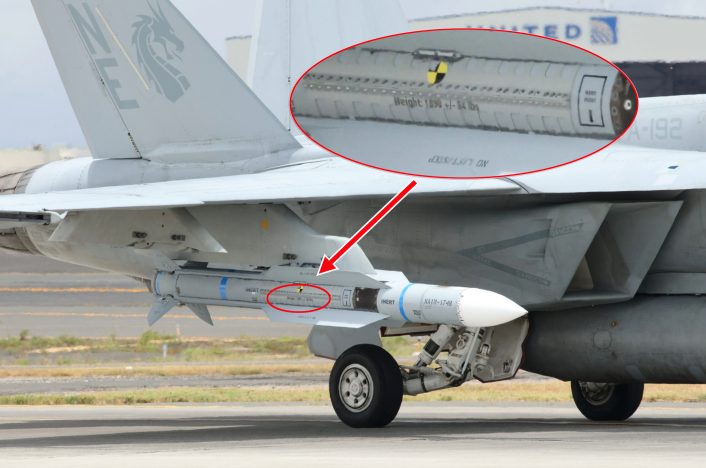
Considering an AIM-120D weights 356 lb (161 kg), the AIM-174B is more than 5 times heavier than the AMRAAM.
Operationally deployed
On April 17, 2024, a US Navy F/A-18 Super Hornet, likely from Air Test and Evaluation Squadron (VX) 9, was spotted carrying the same missile approximately 60 miles north of Naval Air Weapons Station China Lake during tests that preceded the delivery of the AIM-174B to the squadron expected to conduct Operational Test and Evaluation (OT&E). This phase involves testing production or production-representative weapons to determine their operational effectiveness and suitability for supporting a Full-Rate Production (FRP) decision.
Vampire Rhino with what looks like an AGM-84H/K SLAM-ER painted in the orange test paint. Maybe someone else can give a better ID of what it is? pic.twitter.com/kIMiWFXcBo
— StinkJet (@StinkJet) June 3, 2024
Although the news broke in 2021 only, the first sighting of a Super Hornet carrying an SM-6 variant occurred in 2018 when an F/A-18F from VX-31 was photographed with the same missile under its wing, indicating that the U.S. Navy has been developing an air-launched version of the SM-6/RIM-174 for at least six years.
Last week, the U.S. Navy acknowledged that the AIM-174 is operationally deployed, likely in Initial Operating Capability (IOC) with the CVW-2 Air Wing’s Super Hornet squadrons aboard the USS Carl Vinson (CVN-70), as reported by Naval News.
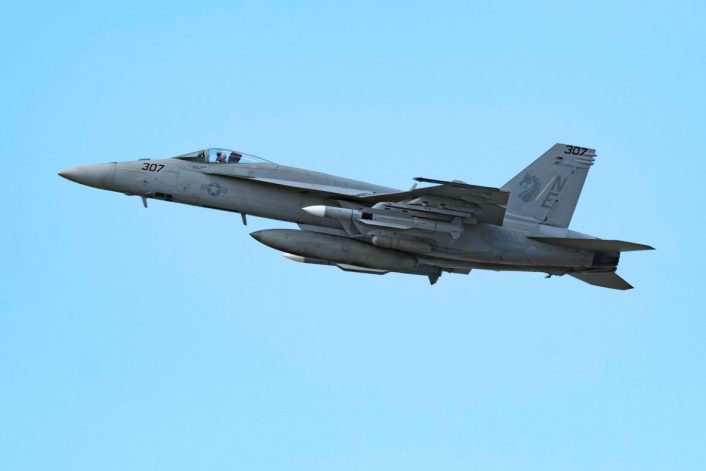
AIM-174B
As previously explained, the AIM-174 is an air-launched version of the RIM-174 Standard Extended Range Active Missile (ERAM), a crucial element of the US Navy’s air defense strategy. Integrated into the Aegis Combat System, the RIM-174 is primarily designed for long-range anti-air warfare but can also be employed for terminal phase ballistic missile defense and as an anti-ship missile. This year marked the first official combat use of the SM-6, with the Department of Defense confirming that the USS Carney intercepted and destroyed an anti-ship ballistic missile fired by Houthi rebels in the Gulf of Aden on January 30, 2024.
The SM-6 uses the airframe of the SM-2ER Block IV (RIM-156A) missile, upgraded with an active radar homing seeker derived from the AIM-120 AMRAAM air-to-air missile. This missile can reach speeds of up to Mach 3.5 and has a maximum range of 200 nautical miles. To that respect, it’s not clear what the maximum range of the air-launched version could be: despite the lack of a booster, launching it at high speed and altitude would result in significantly greater range compared to the surface-launched variant.
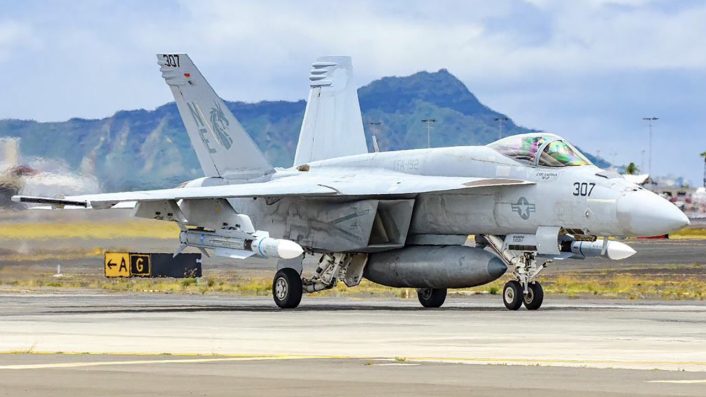
With the induction of the AIM-174B into service, the U.S. Navy joins a number of air arms capable of deploying an extra-long-range beyond-visual-range air-to-air missile (BVRAAM), like the MBDA Meteor, the Russian R-37M and Chinese PL-15 and PL-21. In fact, the AIM-174B enables the U.S. Navy Super Hornets to engage targets at much greater distances than is currently possible with the AIM-120 AMRAAM. Integrated with the E-2D, F-35, and AEGIS within the Naval Integrated Fire Control-Counter Air (NIFC-CA) system, the AIM-174B would extend the Navy’s capability to intercept aerial targets at ranges comparable to (if not greater than) those achieved against naval targets using the baseline SM-6.
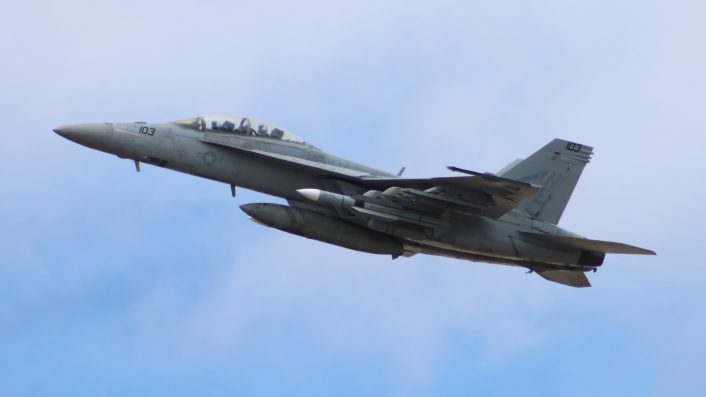
In essence, this new missile fills the gap left by the retirement of the AIM-54 Phoenix. The AIM-54 was a long-range air-to-air missile used by the U.S. Navy’s F-14 Tomcat and retired in 2004 alongside the F-14. Known for its impressive range of over 100 nautical miles and multiple-target engagement capability, the AIM-54 left a significant void in long-range engagement capabilities.
While there wasn’t a direct replacement for the AIM-54 Phoenix in terms of range, the U.S. military has been developing advanced air-to-air missiles to enhance its fighter aircraft capabilities. The AIM-260 Joint Advanced Tactical Missile (JATM) is one such development intended to replace the AIM-120 AMRAAM. Although not a direct replacement for the AIM-54 Phoenix, the AIM-260 aims to offer improved range and performance compared to the AIM-120.

